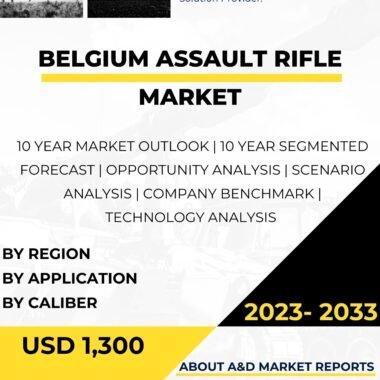Description
Small Arms and Light Weapons (SALW) are an integral part of Canada’s civilian and law enforcement landscape, as well as the Canadian Armed Forces (CAF). These weapons serve various purposes, from sporting and recreational activities to ensuring national security and law enforcement capabilities. However, the proliferation of SALW also raises concerns about public safety, criminal misuse, and the need for robust regulations and control measures.
Small Arms and Light Weapons encompass a wide range of firearms and munitions, including handguns, rifles, shotguns, submachine guns, ammunition, and associated accessories. They are typically characterized by their ease of use, light weight, and portability, making them accessible to a broad range of users.
In Canada, the possession, acquisition, and use of SALW are governed by the Firearms Act and its supporting regulations. The Firearms Act was introduced in 1995 in response to growing concerns about firearm-related violence and public safety. The Act established a comprehensive licensing and registration regime for firearms owners, including those with SALW.
Individuals seeking to possess or acquire SALW in Canada must undergo a stringent screening process, including background checks, safety training, and reference checks. Applicants must demonstrate a legitimate reason for possessing SALW, such as target shooting, hunting, or collection purposes. The licensing process is designed to ensure that only responsible and law-abiding individuals have access to firearms and SALW.
For those engaging in firearms-related activities, such as target shooting or hunting, Canada’s licensing system allows for the lawful use of SALW. Licensed individuals must adhere to strict storage and transportation regulations to prevent unauthorized access and mitigate the risk of theft and diversion to criminal activities.
SALW used for law enforcement purposes are subject to separate regulations and controls. Police agencies and law enforcement personnel are authorized to carry and use SALW in the line of duty to ensure public safety and enforce the law. However, stringent training and operational guidelines are in place to ensure the responsible and lawful use of these weapons.
Canada’s military, the Canadian Armed Forces (CAF), also employs SALW for national defense and security missions. The CAF maintains a variety of small arms, including rifles, pistols, and machine guns, to equip its personnel for both combat and peacekeeping operations. The CAF operates under strict rules of engagement, ensuring that the use of SALW adheres to international humanitarian law and respect for human rights.
While Canada’s regulations on SALW are comprehensive, there are ongoing concerns about the illicit trade and criminal misuse of firearms and small arms. Smuggling, trafficking, and illegal possession of SALW pose significant challenges for law enforcement agencies and undermine public safety.
The Canadian government takes a multi-pronged approach to address the illicit use of SALW. This includes border security measures to prevent the illegal import and export of firearms, international cooperation to combat arms trafficking, and efforts to disrupt criminal networks involved in the illicit firearms trade.
Additionally, public awareness campaigns promote responsible firearms ownership and encourage the reporting of suspicious activities related to SALW. By engaging the public, law enforcement agencies can receive valuable information to identify and prevent potential criminal activities involving firearms.
To further enhance public safety, the government has implemented measures to reduce the availability of firearms to individuals deemed at higher risk of committing violence. This includes measures to address intimate partner violence and domestic violence, as well as initiatives to combat gang-related activities and organized crime involving firearms.
The Canadian government also works closely with provinces and territories to ensure consistent regulations and control measures for SALW. Provincial authorities play a crucial role in the issuance and administration of firearm licenses, ensuring that the licensing process aligns with local needs and public safety priorities.
Another area of focus is the proper management and disposal of SALW that are no longer required or are no longer safe to use. Responsible firearms owners are encouraged to surrender unwanted or unsafe firearms to authorities, preventing them from falling into the wrong hands and reducing the risk of accidents.
Canada’s approach to SALW also extends to international efforts to curb the illicit trade and proliferation of small arms. The country is actively engaged in international arms control initiatives, including the United Nations Programme of Action on Small Arms and Light Weapons (UNPoA). Through these efforts, Canada supports capacity-building programs, arms control and disarmament measures, and regional cooperation to address the challenges posed by SALW.
The impact of SALW on public safety is a complex issue that requires a comprehensive and multi-faceted response. Striking a balance between the rights of lawful firearms owners and the need to protect public safety remains an ongoing challenge for policymakers.
While regulations and control measures are essential, addressing the root causes of firearm-related violence and crime is equally critical. This includes addressing social and economic factors that contribute to violence, improving mental health support, and strengthening community-based programs to prevent the involvement of young individuals in criminal activities.
In conclusion, Small Arms and Light Weapons (SALW) in Canada serve various purposes, from sporting and recreational activities to law enforcement and national defense. The country has established comprehensive regulations and control measures to ensure the responsible and lawful use of SALW while mitigating public safety risks.
Canada’s licensing and registration regime for firearms owners and strict law enforcement guidelines for the use of SALW support public safety objectives. Efforts to combat the illicit trade and criminal misuse of firearms and small arms are ongoing and involve collaboration between the government, law enforcement agencies, and the public.
As Canada continues to address the challenges posed by SALW, the government remains committed to striking a balance between individual rights and public safety priorities. By engaging in international arms control initiatives and addressing root causes of firearm-related violence, Canada reinforces its commitment to safeguarding public safety and protecting its citizens from the illicit use of Small Arms and Light Weapons.




